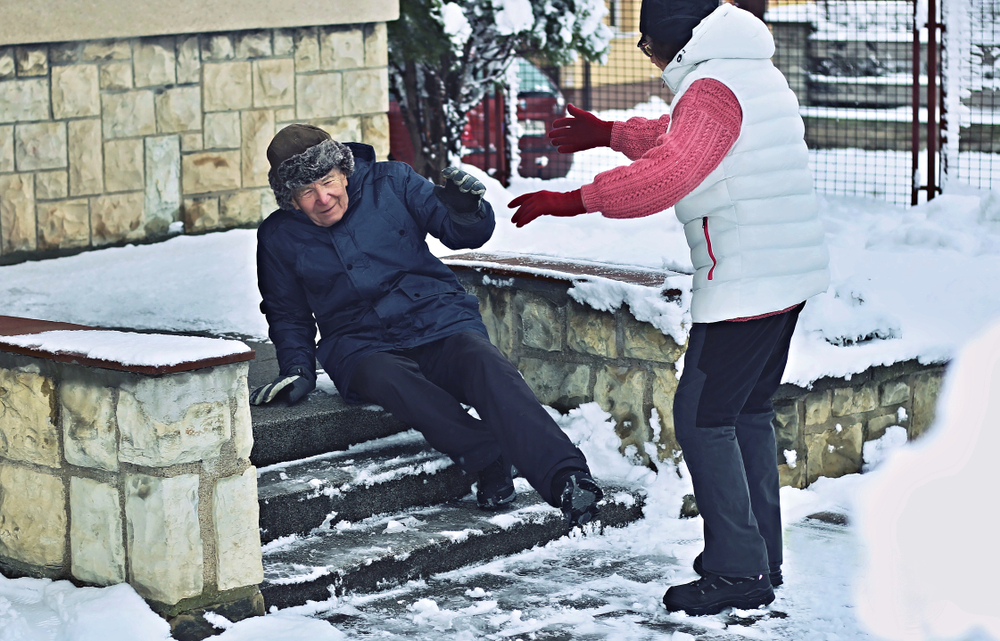Make an Appointment
How to Prevent Injuries in Gymnastics
Did you know that gymnastics is one of the most popular sports to watch at the Olympics?
The whole world seems enamored with the high-flying, flipping, and twisting gymnastics that seem to get more exciting – and dangerous – year after year.
At the elite level and even for recreational gymnasts, how injury-prone are these athletes as the sport continues to grow and grow?
Keep reading to learn more about gymnastics injuries and a few great ideas on how to prevent gymnastics injuries.
How Common are Injuries in Gymnastics?
There is no way to sugarcoat it, gymnastics injuries are quite common.
In fact, the University of Pittsburgh Medical Center claims that girls' gymnastics (specifically) has one of the highest injury rates at 100,000 per year.
In a 10-year observation study conducted by Sports Health of their evaluation of Men's & Women's Gymnastics injuries they observed;
"injury incidence was 8.78 per 1000 athlete-exposures for men and 9.37 per 1000 athlete-exposures for women. Female gymnasts more commonly suffered major injuries compared with men, and more commonly underwent surgery after injury (24.4% of female injuries required surgery vs 9.2% in males). The anatomic region most often injured in men was the hand and wrist (24%). The anatomic region most often injured in women was the foot and ankle (39%). Overall, injury rates were highest in freshman-eligible athletes."
Study can be found HERE.)
Shockingly, these rates are comparable to football and other full-contact sports, showcasing the serious risk for injury in gymnastics.
Some of these injuries are caused by stress and overuse, while others are caused by traumatic accidents. Female gymnasts are more likely to suffer injuries to the ankle and foot. Male gymnasts more commonly suffer wrist, shoulder, and hand injuries due to the upper body dominant skills required of them.
Understanding common injuries associated with participation and specific apparatus can help to develop prevention and rehab programs geared toward helping gymnasts successfully participate at their desired level.
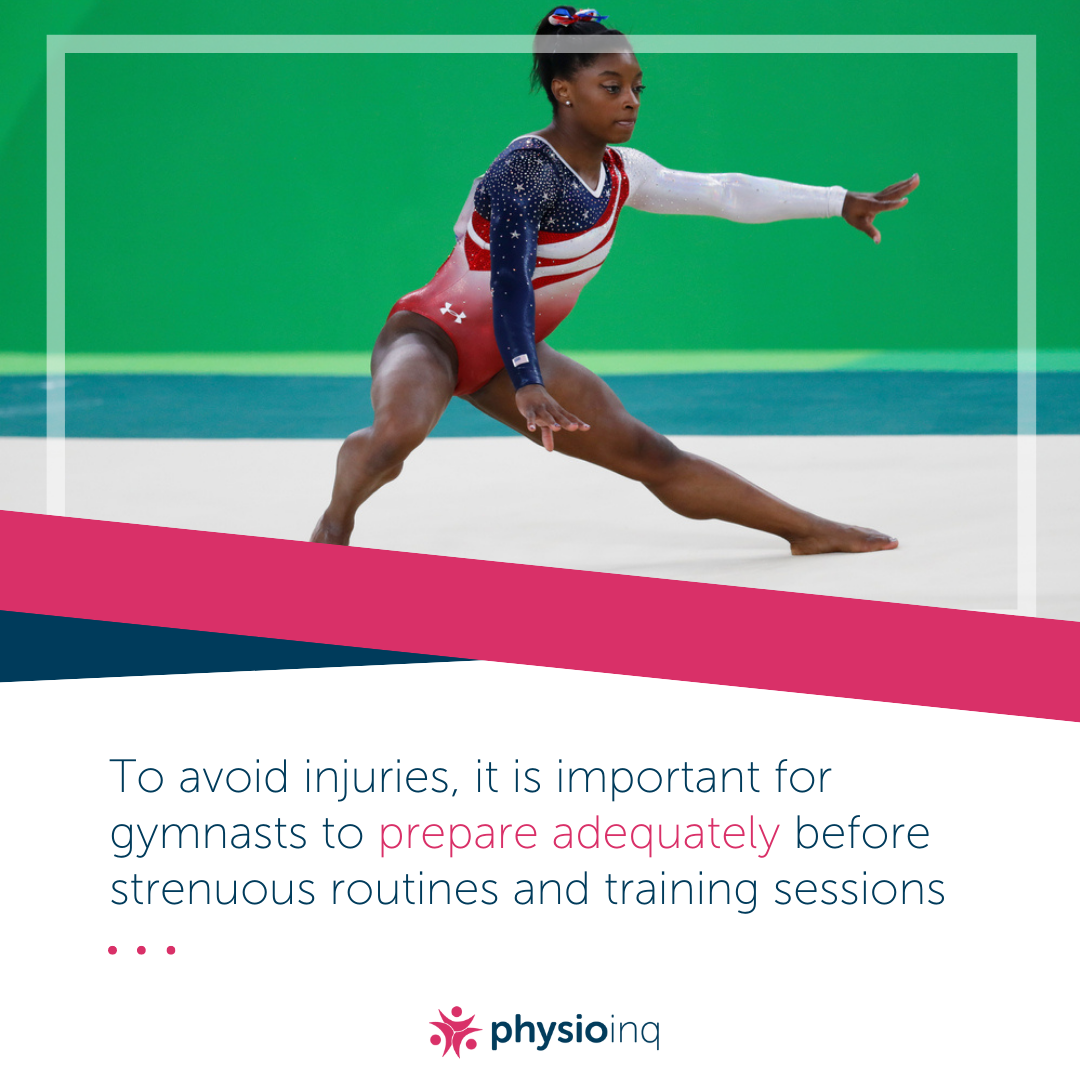
What's the Most Common Injury in Gymnastics?
The most common injury gymnasts endure is muscle strain.
A muscle strain is an overstretched or torn muscle. Any muscle is susceptible to muscle strain, however, gymnasts most commonly experience muscle strain in the lower back, shoulder, and hamstring.
Overtraining is a common cause of muscle strain but rest and light stretching can help it heal.
Perhaps you’re wondering what are the most common injuries in gymnastics. Here are other common injuries gymnasts can face:
Wrist Injuries – Gymnasts put an incredible amount of force on their wrists, forces that can exceed twice the body weight. The primary step in approaching wrist pain is to decrease the training volume of the athlete, ease symptoms, and to partake in only pain-free activities. After an injury, gymnasts should avoid unrestricted stress on the wrist joint for up to six weeks and consider using a brace to keep it stable
ACL Injuries– Most people who tear their ACL (Anterior Cruciate Ligament) feel pain and a "pop" in their knee followed by swelling. An MRI can confirm the diagnosis and ACL reconstruction is suggested for gymnasts who wish to revert to full sports participation.
Achilles Tendon Injuries – Gymnasts can experience a variety of injuries to the Achilles tendon as a result of repeated jumping and landing forcefully. Achilles tendinitis results in calf soreness that is exacerbated with jumping and landing. Treatment should initially consist of ultrasound, stretching, activity adjustment, and calf exercises.
Foot and Ankle Injuries – Various minor or serious injuries can occur to the foot and ankle. Swelling, bruising and tenderness directly over the bones are indications of a more serious injury and should be evaluated by a professional. Minor injuries typically have tenderness limited to one side of the joint without significant swelling. Protection with taping or a brace can help recovery and diminish the danger of re-injury.
Labral Tears – These tears (sometimes called SLAP tears) are commonly caused by repetitive use of the shoulder or acute trauma. They are often seen in male gymnasts, the rings and bars make them particularly vulnerable. SLAP tears are identified by pain that relatively quickly disappears, but has a tendency to reappear with the return to sport and are diagnosed with an MRI.
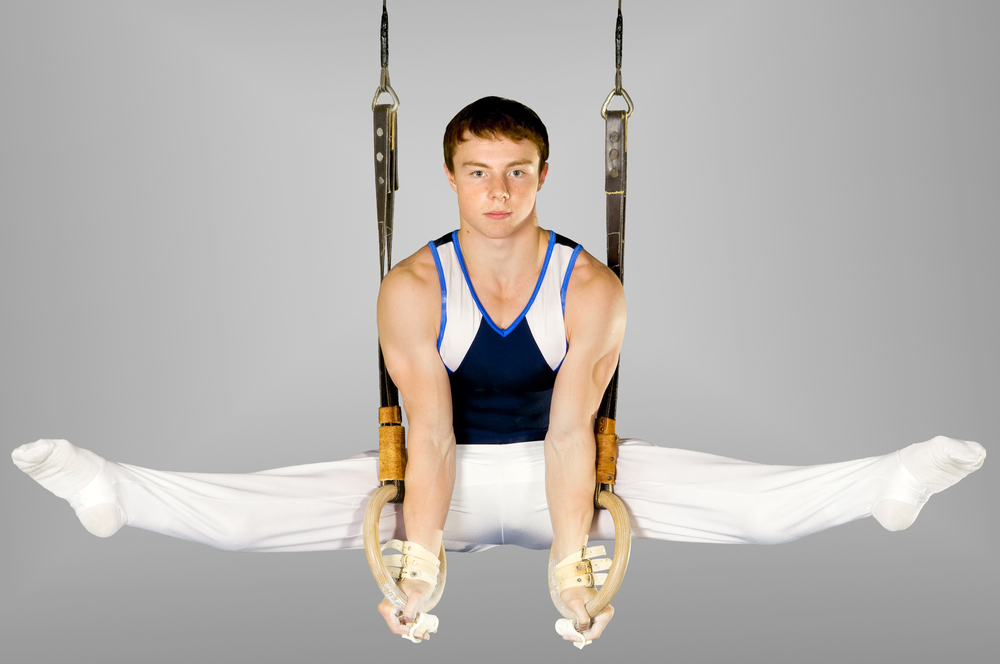
How and When Injuries Occur in Gymnastics
There is a lot of repetition in gymnastics. Gymnasts practice a drill or skill over and over and over again. The repetition required to build muscle memory and learn a new skill can be the cause of an overuse injury.
An overuse injury is the result of repetitive microtrauma to the tendons, bones and joints resulting in pain that can be chronic in its most serious stage. Gymnasts that are still growing should watch carefully for overuse injuries, as their bodies can be more susceptible than others.
Gymnastics injuries occur more often in competition than in practice. During practice, mats and landing pits are typically used to learn and master new skills. But, in competition, gymnasts are performing high-level skills at higher speeds and greater heights without the benefit of crash pits and extra cushions.
The most common long-term injuries are traumatic knee injuries, including ACL tears, that cause the athlete long periods of time away from the sport, and most likely surgery. ACL injuries most often occur on the floor exercise in gymnastics. However, many gymnasts can recover from an ACL injury and return to the sport with surgery and an intense rehabilitation program.
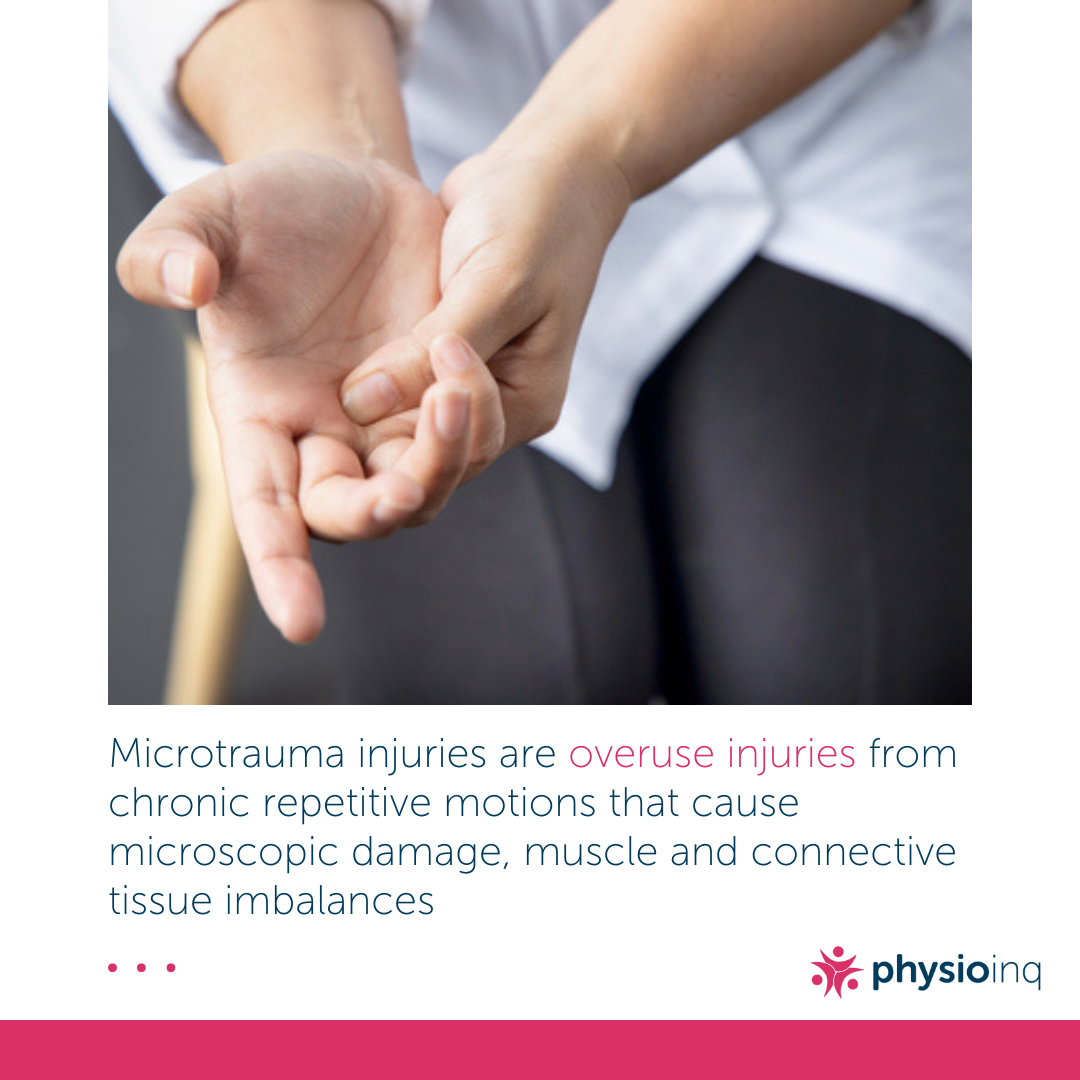
How to Prevent Injuries in Gymnastics
A few things that can help reduce the risk of injury in gymnastics include:
- Do a thorough warm-up
- Stretch to warm up and cool down
- Keep hydrated
- Avoid loose-fitting clothing
- Utilize an injury prevention conditioning program
If you have a budding Simone Biles in your family, there are things parents and coaches can do to help prevent these injuries.
First and foremost, gymnastics should always be supervised to ensure the equipment is safe and coaches are using safe spotting techniques. They should also be using safe practice protocols on difficult skills.
Especially during practice, utilise essential safety gear such as wrist guards, hand grips, specific footwear, ankle or elbow braces and pads – and of course crash mats and pits.
Many serious athletes have a “play through the pain” mentality, but at a young age teaching gymnasts that it's necessary to address an injury before it festers and becomes a bigger problem is a must.
Strength training and cross-training are both good for injury prevention and can help keep gymnasts motivated by helping them progress to the next skill level. Strength training should focus on building the core, which gives the gymnast a stable base for the arms and legs as they move in different directions.
Cross-training can help combat the repetitive patterns of gymnastics – and can also help rehabilitate injuries, promote recovery, enhance motivation and rejuvenate the mind and body during breaks from formal training.
What Exercises Prevent Gymnastics Injuries?
Building strength, stability and mobility in key areas goes a long way to reducing injury risk. Incorporate these once – twice weekly into your routine:
Core & Trunk Control
- Hollow-Body Hold (3×20–30 s)
- Lie on your back, lift shoulders and legs a few centimetres off the ground, keep lower back pressed in.
- Side Plank (3×20 s each side)
- Supports oblique and shoulder stability for better balance on beam and bars.
Hip & Lower-Limb Strength
- Glute Bridges (3×15)
- Lie on your back, drive through heels to lift hips, great for explosive tumbling.
- Split Squat (3×10 each leg)
- Front foot elevated on a low box, lower into a lunge to strengthen quads and stretch hip flexors.
Shoulder & Scapular Stability
- Band-Resisted External Rotations (3×12 each arm)
- Elbow at side, rotate forearm away from your belly, helps protect against shoulder impingement on rings and vault.
- Prone “Y” Raises (3×10)
- Lying face-down, lift arms overhead in a “Y” shape to train the upper back and improve posture.
Wrist & Forearm Conditioning
- Wrist Extensions/Curls (3×15 each)
- Use a light dumbbell or band, prepares wrists for weight-bearing in handstands and vault.
- Rice Bucket Drills (2 minutes)
- Dig and twist your hand in a bucket of rice to build endurance.
Ankle & Proprioception
- Single-Leg Balance on Foam (3×30 s per side)
- Enhances joint awareness for safer landings.
- Calf Raises (3×20)
- Off a step to build Achilles resilience for sprint and jump landings.
Dynamic Mobility
- Leg Swings & Arm Circles (1–2 minutes total)
- Loosen hips, shoulders and spine before training.
- Thoracic Rotations (3×10 each side)
- On all-fours, thread one arm under your chest to maintain mid‐back mobility for tumbling.
By programming these exercises around your skills practice, you’ll shore up the muscles and joints that gymnastics stresses most, so you can train harder, perform safer and stay in the sport for longer.
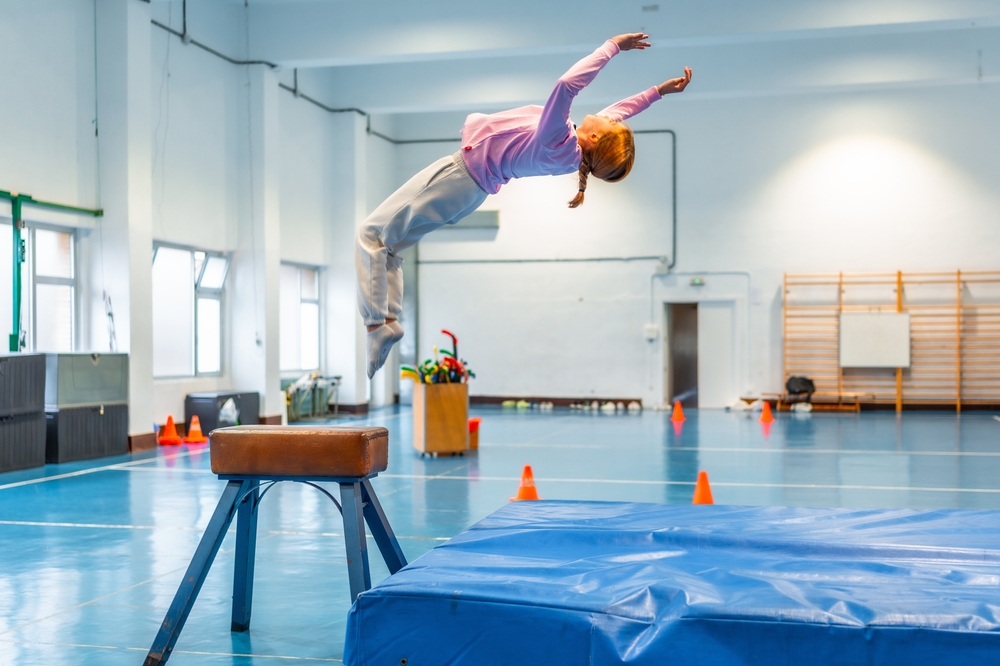
Frequently Asked Questions
1. How much warm-up is enough before a gymnastics session?
Aim for at least 10–15 minutes of dynamic movements, light cardio, joint mobilisations and neuromuscular activations, so your muscles and nervous system are primed for the high-impact skills ahead.
2. When should I rest or modify training to avoid overuse injuries?
If you experience persistent aches that don’t resolve with rest and ice within 48–72 hours, reduce load, cross-train or take a short break. Early intervention prevents minor niggles from becoming chronic problems.
3. Are crash mats and spotting enough to prevent serious injuries?
They’re essential, but must be paired with proper strength, flexibility and technique training. Adequate conditioning, especially core and shoulder stability, builds resilience far beyond what padding alone can provide.
4. How soon can I return to gymnastics after an ACL reconstruction?
Return timelines vary, but with a structured rehab program under a physiotherapist, many athletes begin modified floor work around 4–6 months post-surgery and full apparatus training by 9–12 months, depending on strength and stability milestones.
5. Can cross-training really reduce injury risk?
Yes. Integrating low-impact activities (e.g. swimming, Pilates) helps balance muscular development, breaks repetitive loading patterns and supports both physical recovery and mental freshness.
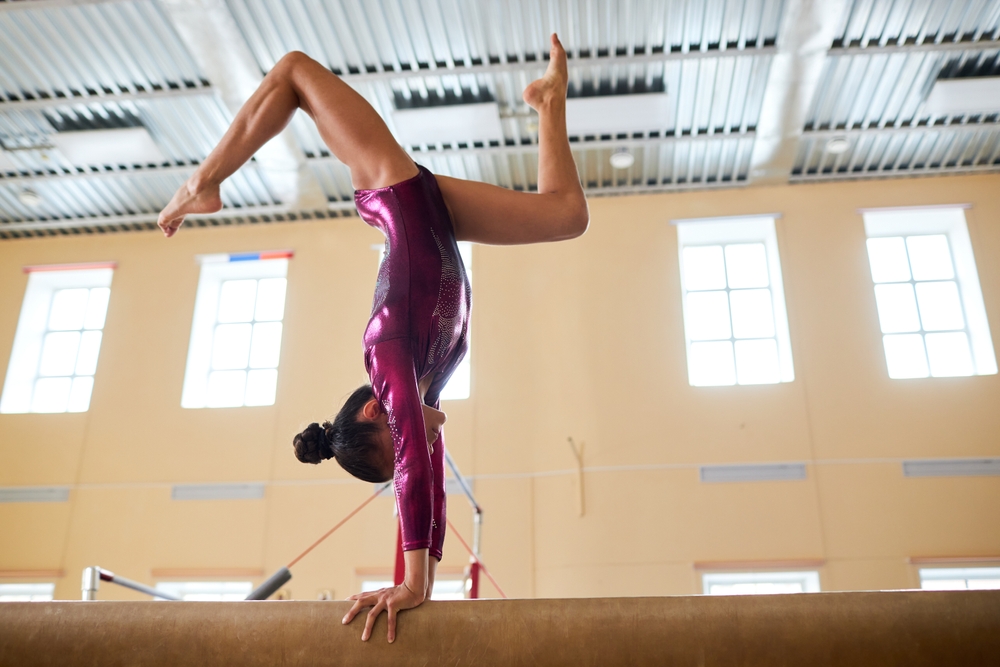
Preventing and managing gymnastics injuries requires a blend of safe technique, adequate equipment, targeted strength and conditioning, and timely professional support. By embedding thorough warm-ups, smart load-management and cross-training into your routine, you can minimise downtime and maximise performance.
Take the Next Step:
Whether you’re aiming to level up your injury-prevention or rehabbing a recent setback, Physio Inq is here to help. Our in-home, clinic-based and online services include:
- Physiotherapy for hands-on assessment and rehab
- Exercise Physiology for personalised strength and conditioning programs
- Occupational Therapy to optimise daily training adaptations
Call 1300 731 733 or book an appointment now to create your tailored plan - and keep flying, flipping and twisting safely.
Date Published: Sunday, June 19, 2022
Locate a Physiotherapy
Service Near me
Get the experience & convinence you deserve to support your or a loved one's allied health needs.
Our Physiotherapy team are currently serving & taking appointments in the following states and regions in Australia:
Need to get into direct contact with ur Client Services team? We're all ears. Call our team directly on 1300 731 733

